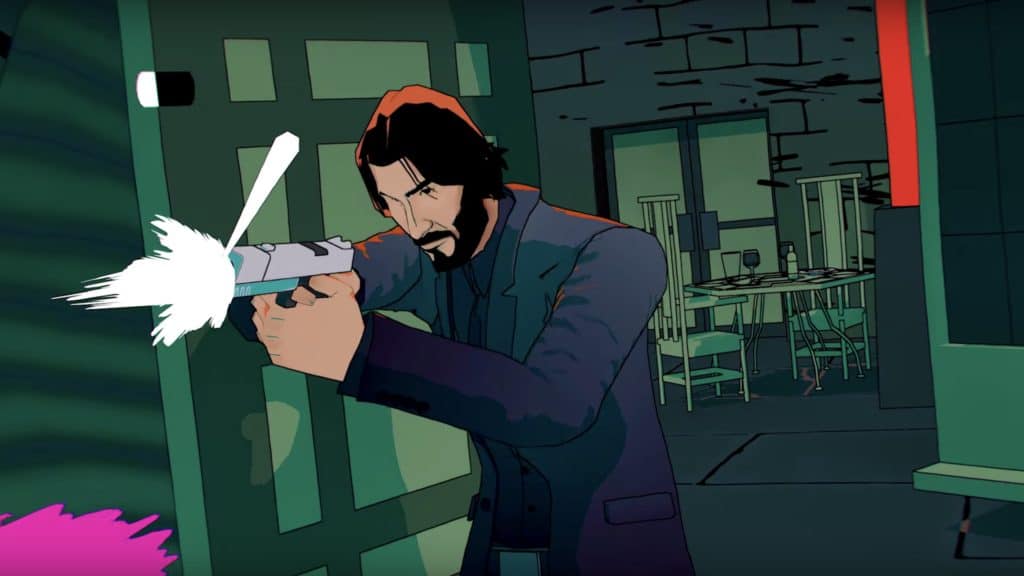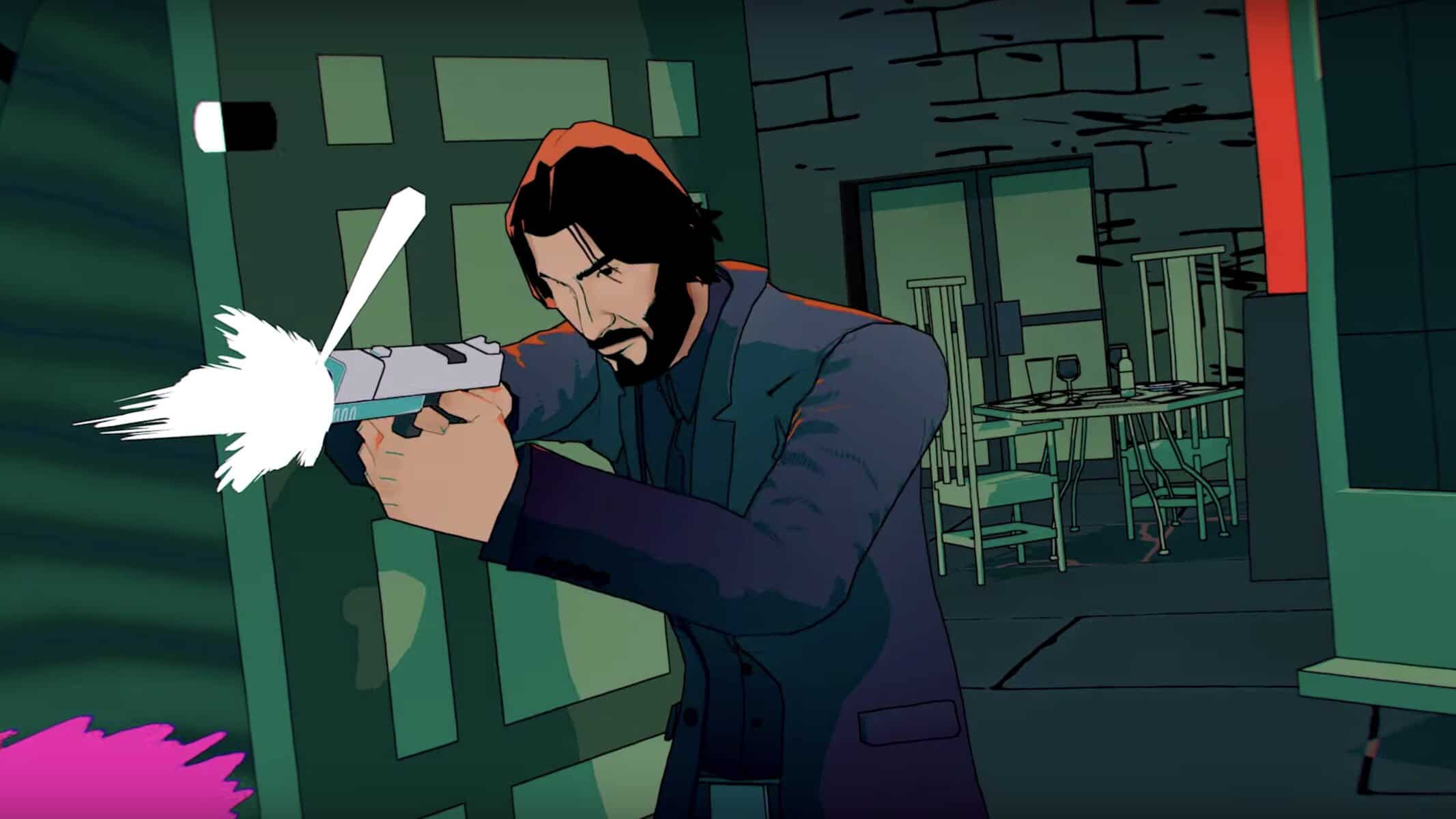You can trust VideoGamer. Our team of gaming experts spend hours testing and reviewing the latest games, to ensure you're reading the most comprehensive guide possible. Rest assured, all imagery and advice is unique and original. Check out how we test and review games here
For developer Bithell Games, John Wick Hex represents a curious challenge: how do you make a video game that’s based on a salvo of action films that feel—emotionally cold, running on overclocked processors—like video games? The obvious solution might be a twin-stick shooter, or maybe a remoulding of the Max Payne formula: sailing through doldrums of plot in slow-motion with a machine gun roaring. The trouble with these approaches is that they miss the point. The joy of the John Wick movies isn’t about mayhem, far from it. It’s about seeing the preternaturally calm Keanu Reeves wiping out rooms of thugs with butlerish briskness, as one might banish unwanted clutter during a fevered spring clean.
The answer is to make a game that feels like a movie—or, at least, that feels like editing a movie. In John Wick Hex, like Superhot before it, time only moves when you do; in one level, set in a drenching downpour, needles of rain stand frozen mid-fall while you make up your mind. Wick’s attacks, as well as those of his foes, appear as purple-pink chunks on a timeline, which surges and stops like a media player’s progress bar. The way to feel like John Wick—short of growing your hair into greasy black curtains and indulging in funereal tailoring—is to start living in the next few fractions of a moment. Every action has a time cost, and you become accustomed to questions like, “Can I duck (heightening accuracy but swallowing a half-second), roll (evading an enemy assault), and return fire (taking a full second) before I get hit?” All of this unfolds, presumably, in the mind of Mr Wick, and the payoff is an end-of-level replay of the successful run, in which you resemble either the man himself or his neurotically indecisive twin.
The overarching missions—seven in total—are made up of five or so levels. Between missions, you spend gold coins, the currency of the criminal underworld (which Mario is also known to trade in), on various perks. You can stash weapons and bandages at strategic points or purchase buffs, decreasing the likelihood of getting clipped while moving, for instance. You won’t emerge from these menus spouting Sun Tzu, but they provide further texture to your in-game tactics, and they are in keeping with the distinctly Wickian atmosphere. All of which makes me wonder, Who is this for? Those who like to inhale Wick’s exploits with draughts of Pepsi and Butterkist at the multiplex will find little to love, and the game is pitched between the tactically minded and the trigger-happy.
The target audience, I guess, is anyone who is willing to meet the game on its own terms. I was reminded, while playing, of Metal Gear Acid, a turn-based spin-off of Metal gear Solid in which the mission, and thus the entire planet, hung on hands of collectible cards. For some stiff-backed fans of the series, it was a stodgy proposition, but I remember it fondly for reshuffling a well-schlepped formula. That game’s director, Shinta Nojiri, said in an interview, “The original game was Solid, right, and Acid dissolves Solid, so we thought that suggested a different game.” Indeed, and John Wick Hex could have been a number of different games, none of them as strange and satisfying as this. When a familiar template is chewed on by a change of genre, the result can be illuminating. Acid may well dissolve solid, in other words, but more important than the dissolution is what remains. What Hex leaves us with is an idea of the inner workings of Wick’s brain and an eccentric vision of his world.
The levels are overlaid with a honeycomb grid (you move along amusingly zagging routes), which has the added benefit of giving each area the buzz of a shadowy hive. The settings—a series of narcoleptically lit clubs, art galleries, and offices—are of the drab and drone-patrolled sort that would seem lethargic in most genres; you would never want to elbow through them in first person or in real time. But here, viewed from on high with a craning camera, they have a dim appeal. They are half of the meaning behind the “Hex” of the title, the other being the game’s eponymous villain (voiced by Troy Baker). The plot is risible, buoyed on currents of hot air that waft from the mouth of Hex in a series of still cutscenes and voice-overs. His grudge is with the Illuminati-like High Table—a cabal of which Wick is a deadly scion—and he brings this to bear by kidnapping two of his comrades, Winston and Charon (voiced by Ian McShane and Lance Reddick, respectively, both reprising their roles from the films).
I would complain about the story were it not for two reasons. One, there is something irresistible, whispering to the ten-year-old in me, about the covens and codes of honour that invisibly govern the darkness. And two, narrative, in a game such as this, is like a spent shell casing: necessary, in the fiery birth of excitement, but not important. Perhaps the more pertinent question would be about the excitement itself, which certainly isn’t for everyone. This is hardly the nerve-igniting spectacle available in the films, which are, in effect, a string of level-winning replays. What we are offered instead are the chilled thrills of the cerebral superman; the man who lives in an existential rhythm all his own; the man for whom the stresses and distractions of others are like distant thuds against a wall of ice; the man who comes and goes as easy and cool as the wind. In short, we are offered the chance to be Keanu Reeves.
Developer: Bithell Games
Publisher: Good Shepherd Entertainment
Available on: PlayStation 4 [reviewed on], PC
Release date: May 5, 2020
To check what a review score means from us, click here.
John Wick Hex
- Platform(s): macOS, Nintendo Switch, PC, PlayStation 4, Xbox One
- Genre(s): Action, Strategy











